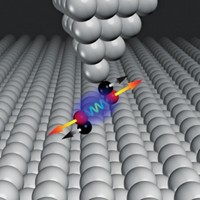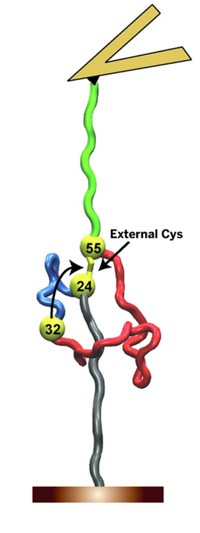Advertisement
Grab your lab coat. Let's get started
Welcome!
Welcome!
Create an account below to get 6 C&EN articles per month, receive newsletters and more - all free.
It seems this is your first time logging in online. Please enter the following information to continue.
As an ACS member you automatically get access to this site. All we need is few more details to create your reading experience.
Not you? Sign in with a different account.
Not you? Sign in with a different account.
ERROR 1
ERROR 1
ERROR 2
ERROR 2
ERROR 2
ERROR 2
ERROR 2
Password and Confirm password must match.
If you have an ACS member number, please enter it here so we can link this account to your membership. (optional)
ERROR 2
ACS values your privacy. By submitting your information, you are gaining access to C&EN and subscribing to our weekly newsletter. We use the information you provide to make your reading experience better, and we will never sell your data to third party members.
Analytical Chemistry
Molecules At Surfaces And Interfaces
by Mitch Jacoby
March 8, 2010
| A version of this story appeared in
Volume 88, Issue 10

For just over 20 years, a laser-based tool called sum frequency generation (SFG) vibrational spectroscopy has allowed chemists to probe the composition, structure, and orientation of molecules at surfaces and interfaces. The technique, which is closely related to the method of second harmonic generation, is sufficiently sensitive to detect less than a monolayer of molecules and readily does so on surfaces that are exposed to high gas pressures, to liquids, and to other conditions that limit the usefulness of classic surface analysis methods.
COVER STORY
Molecules At Surfaces And Interfaces
As a result of spectroscopy selection rules, SFG signals cannot originate from the bulk of a solid or liquid, according to University of California, Berkeley, physics professor Yuen Ron Shen, one of the field's pioneers. At an interface, such as the one between a solid surface and a gas or liquid, however, that symmetry is broken. Simultaneously directing visible and infrared laser beams at such an interface causes the beams to combine and produce light with a frequency equal to the sum of the two inputs. Scanning the IR beam while measuring the intensity of the summed output beam generates a vibrational spectrum of molecules at the interface.
The technique has been applied broadly. For example, in one of the field's older studies, Shen and fellow UC Berkeley colleague Gabor A. Somorjai used SFG to determine the mechanism of olefin hydrogenation on platinum catalysts. The team ruled out various pathways and deduced that the reaction proceeds from π-bonded propylene (one of two possible adsorbate configurations) to propane by way of a 2-propyl intermediate. Other groups employed the method in its early days to analyze semiconductor and electrode surfaces.
More recently, SFG has been used to analyze systems of greater chemical complexity. The University of Utah's John C. Conboy, for example, observed lipids flip-flopping across a bilayer, a process central to cellular membrane chemistry (J. Am. Chem. Soc. 2004, 126, 8376). And at Texas A&M University, Paul S. Cremer's research group capitalized on SFG's knack for pinpointing absolute molecular orientation at interfaces to test proposed mechanisms of protein denaturation by urea. That reaction was discovered more than 100 years ago. But whether the mechanism is driven by hydrogen bonding or by hydrophobic interactions had remained unknown, Cremer says. "By using SFG, we showed that urea flips orientation based on net protein charge, thereby disproving the hydrogen-bonding mechanism" (J. Am. Chem. Soc. 2007, 129, 15104).




Join the conversation
Contact the reporter
Submit a Letter to the Editor for publication
Engage with us on Twitter